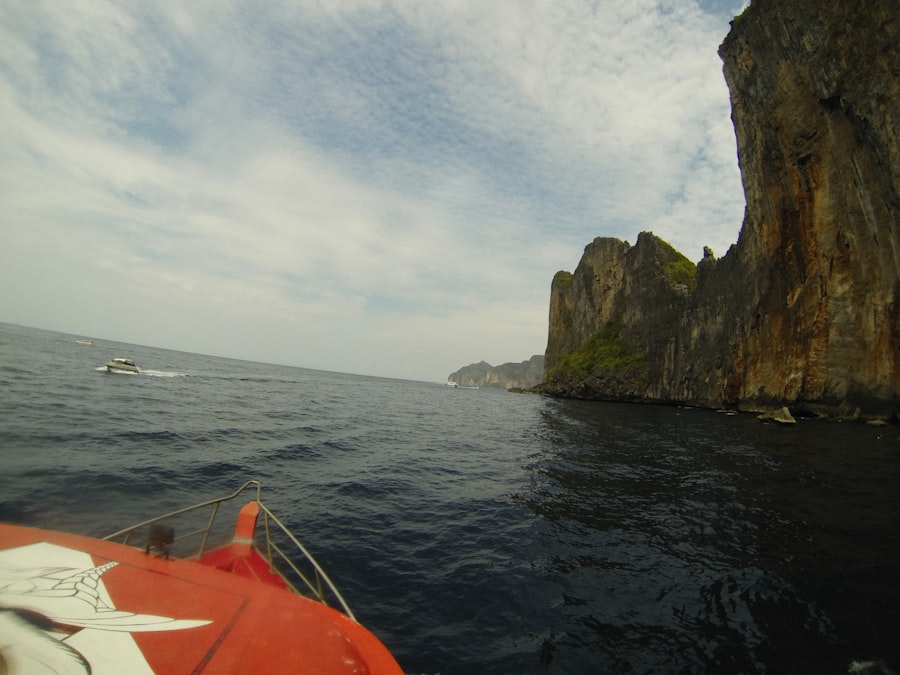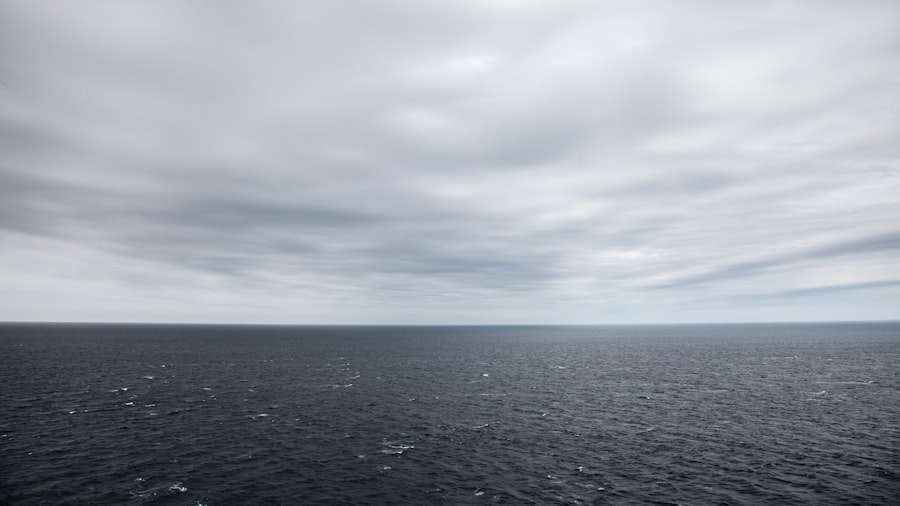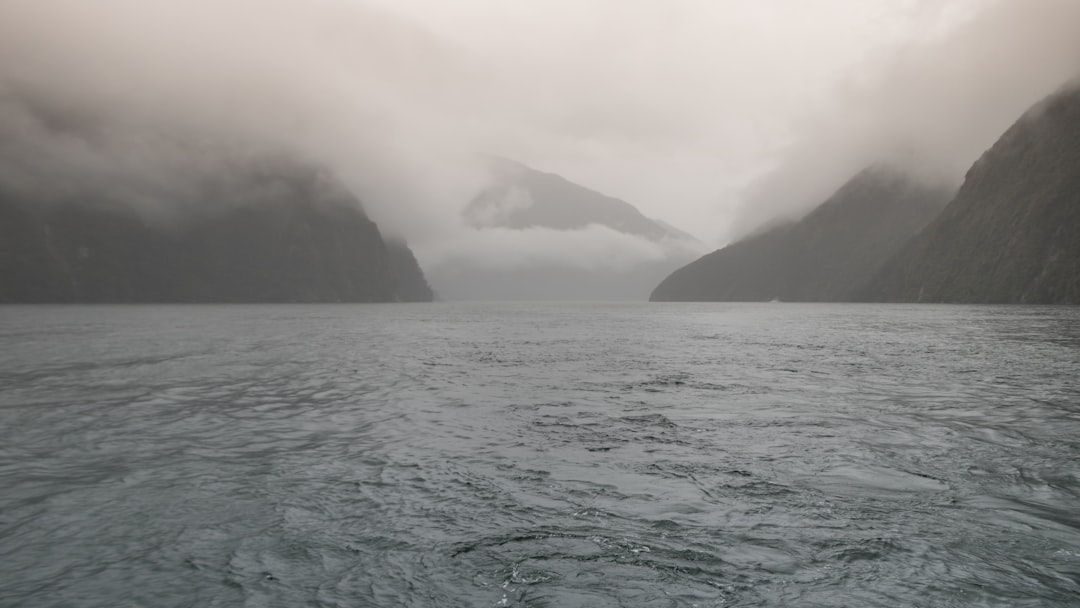The Drake Passage Trench, a formidable stretch of water located between the southern tip of South America and Antarctica, has long captured the imagination of explorers, scientists, and adventurers alike. This narrow body of water, measuring approximately 800 kilometers in width, is renowned for its turbulent waters and unpredictable weather patterns. Named after the English sea captain Sir Francis Drake, who navigated these treacherous seas in the late 16th century, the passage serves as a critical conduit for maritime traffic between the Atlantic and Pacific Oceans.
Its significance extends beyond mere navigation; it is a vital area for marine biodiversity and plays a crucial role in global oceanic currents. The Drake Passage is not just a geographical feature; it is a symbol of the challenges and wonders that the natural world presents. The trench’s unique characteristics have made it a focal point for scientific research, particularly in the fields of oceanography and climate studies.
As vessels traverse this passage, they encounter not only the raw power of nature but also the rich tapestry of life that thrives in its depths. Understanding the complexities of the Drake Passage Trench is essential for anyone seeking to explore its waters or study its ecological significance.
Key Takeaways
- The Drake Passage Trench is a narrow body of water between South America’s Cape Horn and the South Shetland Islands of Antarctica, known for its challenging weather and strong currents.
- The geographic and geological features of the Drake Passage Trench include deep oceanic trenches, underwater mountains, and a complex system of currents that make navigation difficult.
- Traveling through the Drake Passage Trench presents weather and climate challenges such as strong winds, rough seas, and rapidly changing conditions, making it one of the most treacherous waterways in the world.
- Navigational tips for crossing the Drake Passage Trench include using experienced captains and crew, having a well-equipped vessel, and carefully planning the route to avoid the most severe weather and currents.
- The Drake Passage Trench is home to a diverse range of wildlife and marine life, including penguins, seals, whales, and a variety of seabirds, making it a unique and important area for ecological research and conservation efforts.
Understanding the Geographic and Geological Features of the Drake Passage Trench
Geographically, the Drake Passage Trench is defined by its position between Cape Horn in Chile and the Antarctic Peninsula. This strategic location makes it one of the most important maritime routes in the world. The trench itself is characterized by deep underwater canyons and ridges, which contribute to its complex hydrodynamics.
The seafloor features a variety of geological formations, including volcanic ridges and sedimentary basins, which have been shaped by tectonic activity over millions of years. These geological features not only influence ocean currents but also create diverse habitats for marine life. The geological history of the Drake Passage is equally fascinating.
It was formed during the separation of South America and Antarctica, a process that began around 30 million years ago. This separation led to significant changes in ocean circulation patterns, which have had lasting effects on global climate systems. The trench’s depth can reach over 4,000 meters in certain areas, making it one of the deepest parts of the Southern Ocean.
The interplay between these geological features and oceanic currents creates a dynamic environment that is both challenging and rich in biodiversity.
Weather and Climate Challenges in the Drake Passage Trench

The weather conditions in the Drake Passage Trench are notoriously unpredictable, often described as some of the most challenging on Earth. The convergence of cold Antarctic waters with warmer currents from the north creates a volatile atmosphere that can lead to sudden storms and rough seas. Sailors navigating this passage must be prepared for rapidly changing weather patterns, including high winds, heavy rain, and even snow.
These conditions can make crossing the passage a daunting task, requiring skill and experience. Moreover, the climate in this region is influenced by various factors, including ocean currents and atmospheric pressure systems. The infamous “Roaring Forties,” a belt of strong westerly winds found between 40 and 50 degrees south latitude, often exacerbates the already tumultuous conditions in the Drake Passage.
As a result, vessels may encounter waves that reach heights of up to 15 meters or more. Understanding these weather patterns is crucial for anyone planning to traverse this challenging waterway, as they can significantly impact travel times and safety.
Navigational Tips and Techniques for Crossing the Drake Passage Trench
| Technique | Effectiveness | Difficulty |
|---|---|---|
| Using stabilizing equipment | High | Medium |
| Following established shipping routes | High | Low |
| Monitoring weather conditions | Medium | High |
| Utilizing experienced navigational crew | High | Low |
Successfully navigating the Drake Passage Trench requires careful planning and an understanding of maritime navigation techniques. One of the most important aspects is to monitor weather forecasts closely before embarking on a journey through this region. Modern technology has made it easier to access real-time weather data, allowing sailors to make informed decisions about when to set sail.
Additionally, experienced mariners often recommend waiting for favorable conditions before attempting to cross, as this can greatly reduce the risks associated with rough seas. Another essential navigational technique involves understanding ocean currents and their impact on vessel movement. The Antarctic Circumpolar Current flows through the Drake Passage, creating strong currents that can affect navigation.
Sailors should familiarize themselves with these currents and plan their routes accordingly to take advantage of favorable conditions while avoiding areas where currents may pose challenges. Utilizing advanced navigational tools such as GPS and radar can also enhance safety and efficiency during the crossing.
Wildlife and Marine Life in the Drake Passage Trench
The Drake Passage Trench is home to an astonishing array of wildlife and marine life, making it a hotspot for biodiversity in the Southern Ocean. The nutrient-rich waters support a variety of species, including krill, which serve as a crucial food source for larger marine animals such as whales, seals, and seabirds. The presence of these species highlights the ecological importance of the passage as a feeding ground for many migratory animals.
Among the most iconic inhabitants of the Drake Passage are several species of whales, including humpback whales, orcas, and blue whales. These majestic creatures can often be spotted during crossings, providing a breathtaking experience for travelers. Additionally, seabirds such as albatrosses and petrels are frequently seen soaring above the waves, taking advantage of the strong winds that characterize this region.
The rich marine life not only contributes to the ecological balance of the area but also offers unique opportunities for wildlife observation and research.
Historical Significance and Exploration of the Drake Passage Trench

The historical significance of the Drake Passage Trench cannot be overstated. It has been a critical route for explorers since the Age of Discovery when European navigators sought new trade routes to Asia. Sir Francis Drake’s expedition in 1578 marked one of the first recorded crossings of this treacherous passage, paving the way for future exploration and maritime trade.
Over the centuries, countless explorers have braved its waters in search of new lands and resources, each leaving their mark on history. In addition to its role in exploration, the Drake Passage has also been significant in scientific research. The unique environmental conditions found within this trench have attracted scientists studying climate change, oceanography, and marine biology.
Research expeditions have provided valuable insights into ocean currents, marine ecosystems, and their responses to environmental changes. This ongoing exploration continues to enhance humanity’s understanding of our planet’s oceans and their vital role in global systems.
Safety Precautions and Emergency Protocols for Traveling through the Drake Passage Trench
Traveling through the Drake Passage Trench necessitates strict adherence to safety precautions due to its unpredictable nature. Mariners are advised to equip their vessels with essential safety gear, including life jackets, flares, emergency beacons, and first aid kits. Regular safety drills should be conducted to ensure that all crew members are familiar with emergency protocols in case of adverse weather or equipment failure.
In addition to physical preparations, maintaining open lines of communication is crucial during crossings. Vessels should stay connected with maritime authorities and other ships in the area to receive updates on weather conditions and potential hazards. Having a well-thought-out emergency plan that includes evacuation routes and procedures can make all the difference in ensuring safety during an unexpected crisis.
The Impact of Climate Change on the Drake Passage Trench
Climate change poses significant challenges to ecosystems worldwide, and the Drake Passage Trench is no exception. Rising global temperatures are affecting ocean temperatures and salinity levels, which can disrupt marine life and alter established ecosystems. The melting ice from Antarctica contributes to rising sea levels and changes in ocean circulation patterns that may have far-reaching consequences for both local wildlife and global climate systems.
As these shifts occur, researchers are increasingly focused on studying how climate change affects biodiversity within the passage. Understanding these impacts is essential for developing conservation strategies aimed at preserving this unique marine environment for future generations.
Unique Opportunities for Research and Scientific Study in the Drake Passage Trench
The Drake Passage Trench offers unparalleled opportunities for scientific research due to its unique geographic location and diverse ecosystems. Researchers from around the world flock to this region to study various aspects of marine biology, oceanography, and climate science. The convergence of different oceanic currents creates an ideal setting for examining how these forces interact with one another and influence global climate patterns.
Moreover, ongoing research initiatives aim to monitor changes in marine biodiversity as a result of climate change. By studying species distribution and population dynamics within this trench, scientists can gain valuable insights into how ecosystems respond to environmental stressors. These findings not only contribute to academic knowledge but also inform conservation efforts aimed at protecting vulnerable species within this critical habitat.
Cultural and Indigenous Perspectives on the Drake Passage Trench
The cultural significance of the Drake Passage Trench extends beyond its geographical features; it holds deep meaning for indigenous communities who have lived in proximity to these waters for centuries. For many indigenous peoples in South America, such as the Mapuche or Yaghan tribes, these waters are intertwined with their cultural heritage and traditional practices. Their stories often reflect a profound respect for nature and an understanding of its rhythms.
Indigenous perspectives emphasize sustainable practices that honor both land and sea. As modern exploration continues to unfold in this region, it is essential to incorporate these cultural viewpoints into discussions about conservation efforts and resource management. Recognizing indigenous knowledge can lead to more holistic approaches that benefit both local communities and marine ecosystems.
Tips for Planning a Safe and Enjoyable Journey through the Drake Passage Trench
Planning a journey through the Drake Passage Trench requires careful consideration to ensure both safety and enjoyment during travel. First and foremost, travelers should choose reputable tour operators with experience navigating these waters. These operators often provide knowledgeable guides who can share insights about local wildlife, history, and safety protocols.
Additionally, travelers should prepare adequately for varying weather conditions by packing appropriate clothing layers suitable for cold temperatures and potential rain or snow.
By taking these precautions into account while planning their journey through this remarkable passageway, adventurers can enhance their experience while minimizing risks associated with traversing one of nature’s most challenging environments.
In conclusion, traversing the Drake Passage Trench presents both challenges and opportunities for exploration and discovery. From its complex geological features to its rich biodiversity and historical significance, this remarkable waterway continues to captivate those who venture into its depths. By understanding its intricacies—ranging from weather patterns to cultural perspectives—travelers can embark on safe journeys while contributing to ongoing research efforts aimed at preserving this vital marine ecosystem for generations to come.
The Drake Passage Trench is a fascinating geological feature that plays a crucial role in oceanic circulation and marine biodiversity. For those interested in exploring more about the geological and oceanographic significance of this region, a related article can be found on MyGeoQuest. This article delves into the intricate dynamics of the Drake Passage and its impact on global climate patterns. To read more about it, visit the article on MyGeoQuest.
WATCH NOW! Drake Passage: Earth’s Deadliest Waters Revealed
FAQs
What is the Drake Passage Trench?
The Drake Passage Trench is a deep underwater trench located in the southern part of the Drake Passage, which is the body of water between South America’s Cape Horn and the South Shetland Islands of Antarctica.
How deep is the Drake Passage Trench?
The Drake Passage Trench reaches depths of over 8,000 meters (26,000 feet), making it one of the deepest parts of the Southern Ocean.
What causes the depth of the Drake Passage Trench?
The depth of the Drake Passage Trench is primarily due to the tectonic activity in the region, as the Antarctic Plate is being forced beneath the South American Plate, creating a subduction zone and resulting in the formation of the trench.
What is the significance of the Drake Passage Trench?
The Drake Passage Trench plays a crucial role in the circulation of ocean currents and the exchange of water between the Atlantic, Pacific, and Indian Oceans. It also serves as a major gateway for the movement of marine life between the Atlantic and Pacific Oceans.
Is the Drake Passage Trench a popular area for scientific research?
Yes, the unique oceanographic and geological characteristics of the Drake Passage Trench make it a popular area for scientific research, particularly in the fields of oceanography, marine biology, and geology.
